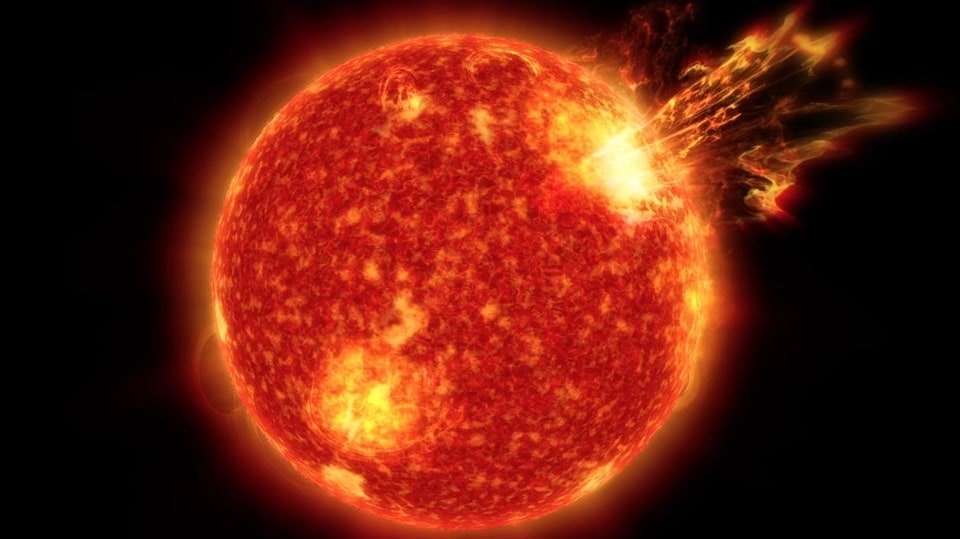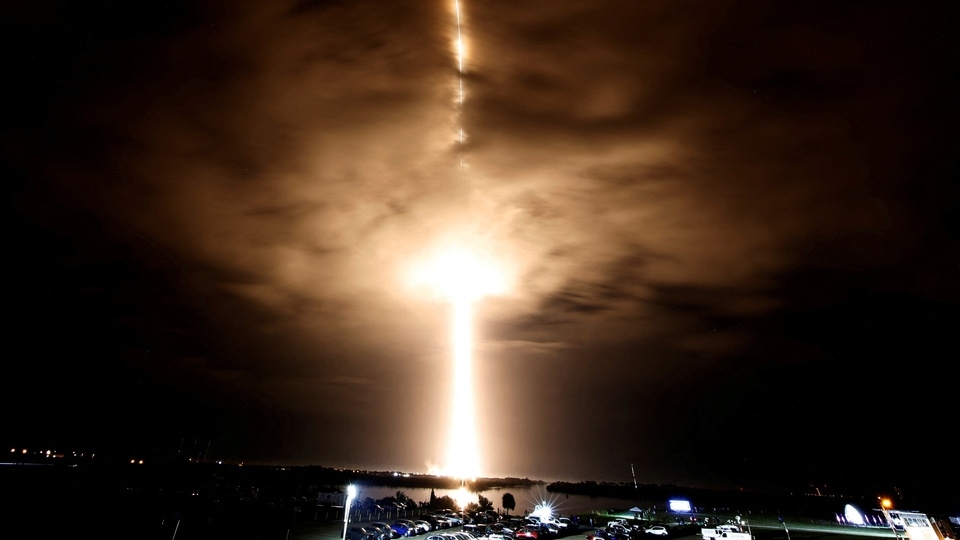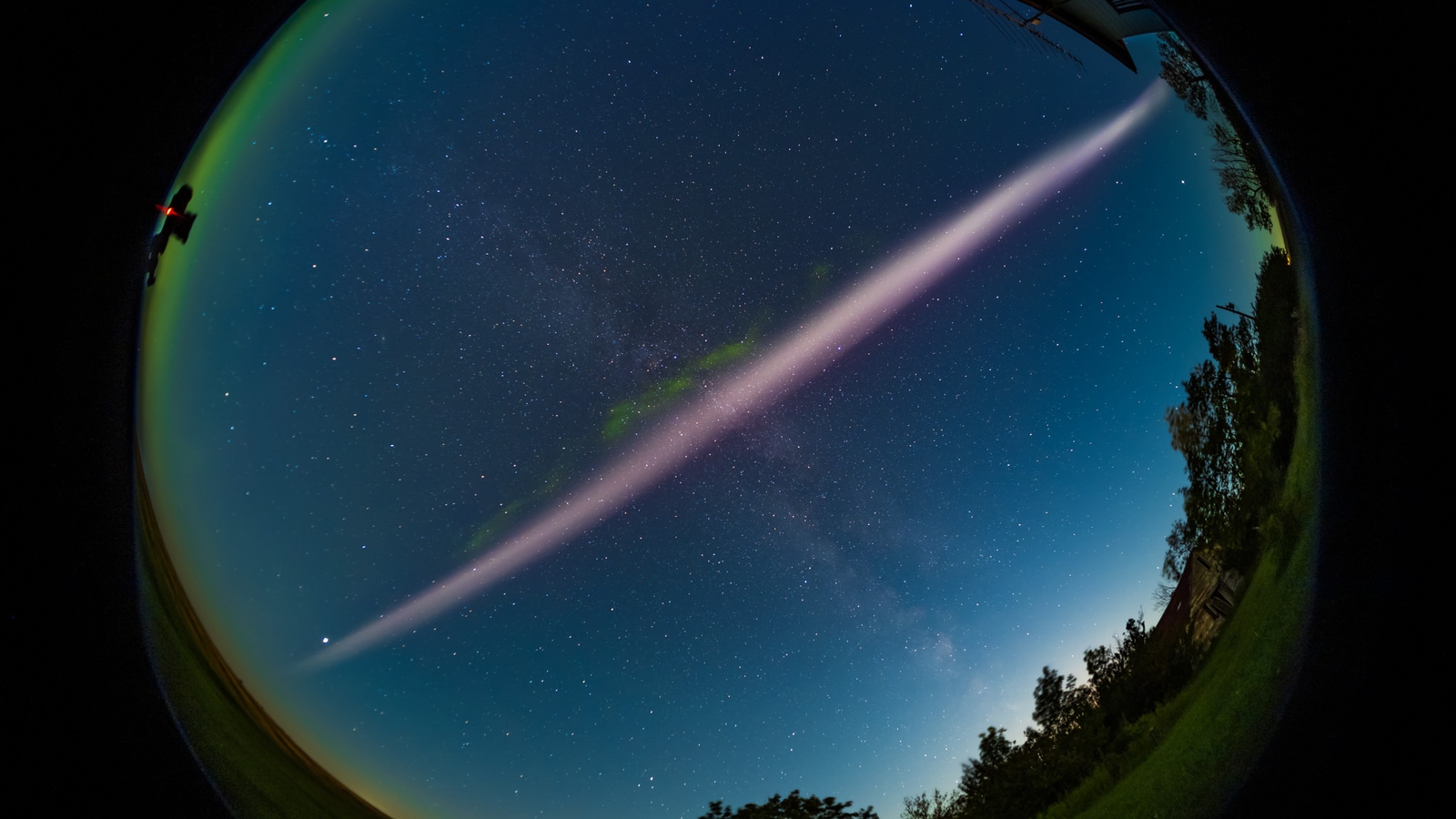Solar Storm sparks this RARE aurora-like phenomena; just check out the images
After a strong solar storm generated a geomagnetic storm on Earth, something special happened- a rare aurora like phenomena.






 View all Images
View all ImagesThe impact of solar storms can be severe on Earth! From radio blackouts, to hampering other forms of communication, satellite failure to knocking out power grids, solar storms are a scourge. However, that applies to the really powerful solar storms. Those that are weaker, generate some fascinating lights on Earth's poles called auroras. However, this time something strange, and rare, happened.
When a solar storm hits the Earth's magnetosphere it sparks a geomagnetic storm and that is what happened on August 8. It was a relatively weaker G-2 level geomagnetic storm. However, this was enough to birth a rare event. It led to the creation of a strange line of light above southern Canada. This rare phenomena is known as STEVE.
Also read: Geomagnetic storm just hit Earth and it has had a dazzling impact
The images of this rare phenomenon went viral on social media. A user named Alan Dyer shared pictures of the rare event on Twitter. He also wrote, "A great showing of @STEVEPhenomena last night, Aug 7-8, arcing across the sky, and showing his green fingers briefly for about 2 minutes. STEVE lasted about 40 minutes, appearing as the Kp5 aurora to the north subsided. This was 12:30 am MDT from southern Alberta.”
What is STEVE?
"STEVE", short for Strong Thermal Emission Velocity Enhancement, usually occurs when the northern lights fade. It lasted around 40 minutes. Discovered back in 2016 by Canadian citizen scientists, STEVE is believed to be created by similar atmospheric disturbances that cause the aurora lights.
Explorersweb.com has this to say about STEVE, "Appearing as a giant ribbon of mauve light arcing across the night sky, it accompanied the vivid aurora visible in southern Canada and parts of the northern U.S. Although it looks and behaves like an aurora, it is an unknown phenomenon." NASA explains it is a "a purple ribbon in the sky, with a green picket fence structure underneath. STEVE is not a normal aurora – some think maybe it's not an aurora at all"
According to NASA, auroras are created when fast-moving, magnetic solar material strikes Earth's magnetosphere. The charged particles escaped from the solar storm hit Earth and get trapped in the magnetic field lines in the atmosphere. The collision of these particles brings a mesmerizing view of the lights known as auroras. The same phenomena is behind the occurrence of STEVE.
Besides this, several users also shared images of the aurora views on Twitter. The Space Weather Physicist Dr. Tamitha Skov reshared one of the pictures of these aurora views from inside the vehicle! Dr. Skov Tweet reads, "WOW! #Aurora views like this might occur again tonight in Canada & upper USA if conditions stay as they are." She suggested that the geomagnetic storm caused by the last solar storm is now close to G1-level solar storm now due to the sustained southward field in this fast solar wind, which is the highest level of the solar storm.
Catch all the Latest Tech News, Mobile News, Laptop News, Gaming news, Wearables News , How To News, also keep up with us on Whatsapp channel,Twitter, Facebook, Google News, and Instagram. For our latest videos, subscribe to our YouTube channel.




























